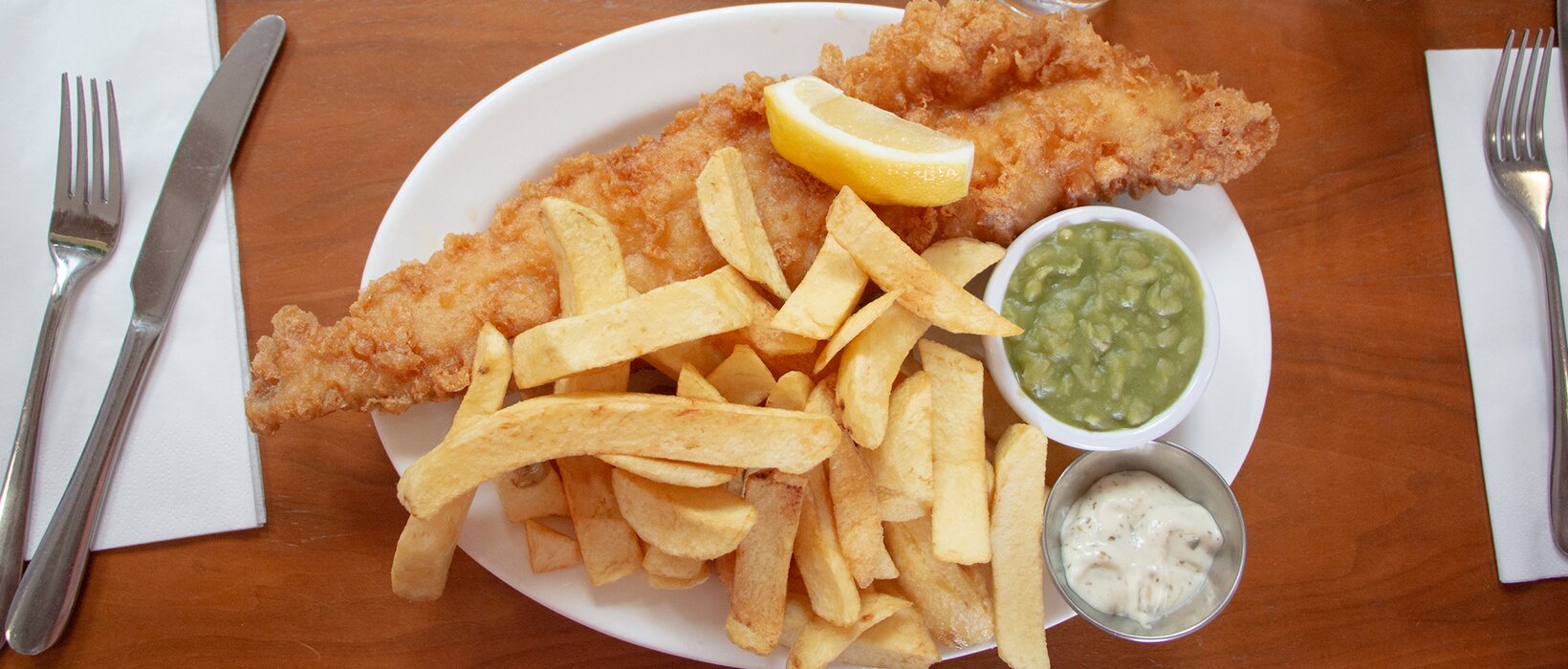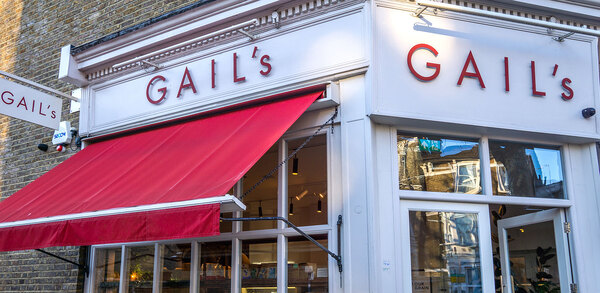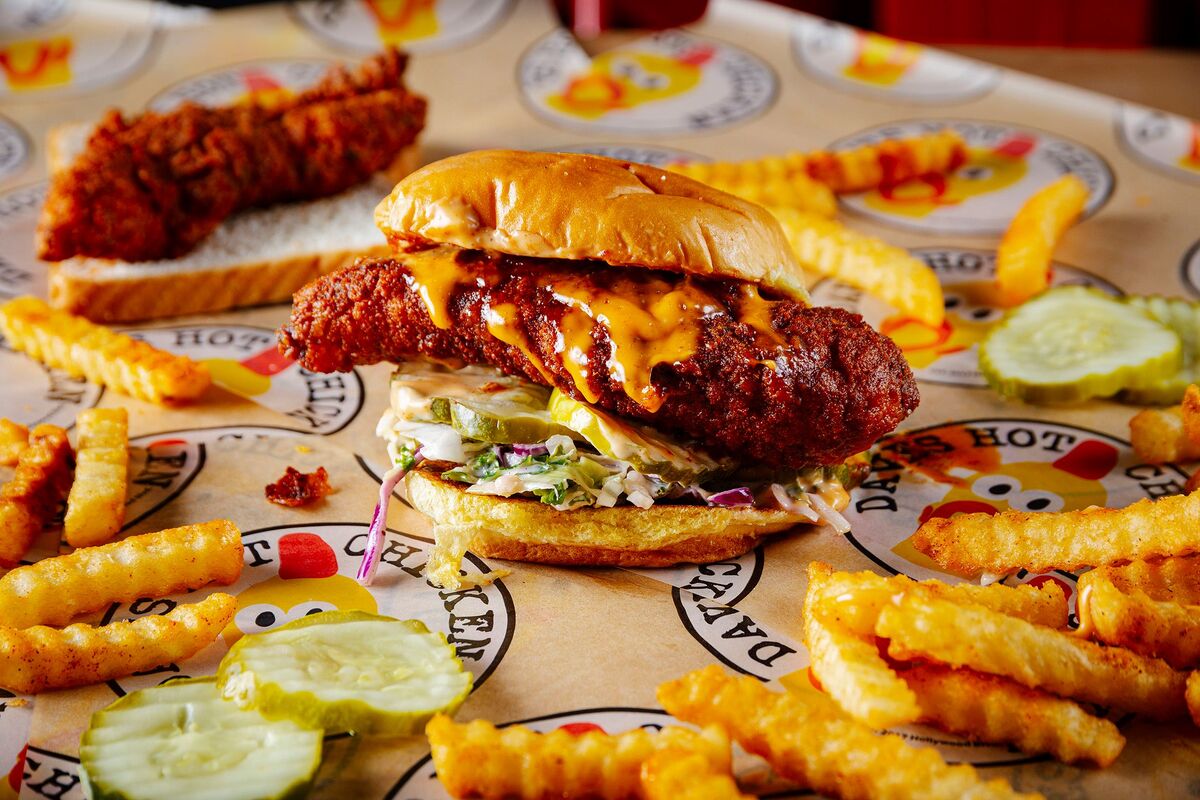Fish and chips have gone upmarket for customers' chippy teas
Customers are casting their nets wider when it comes to a chippy tea, with lobster and moules mariniere taking their place alongside, well, plaice. Will Hawkes looks at upmarket fish and chip shops across the country.
The impact of coronavirus has not been equally distributed. While many restaurants and bars have struggled over the past few years – opening, shutting, and pivoting like an Olympic gymnast – others have thrived. Take chippies, for example: all the evidence suggests that many of them have done very well indeed over the past two years.
A survey carried out last year by online delivery firm Flipdish indicated that fish and chips, a comforting classic at a very uncomfortable time, was the most popular takeaway food during lockdown. Recent research by the Norwegian Seafood Council backs this up: 33% of Brits eat fish and chips once a week or more, it found, and 65% tuck in at least once a month.
John Molnar, owner of multi-award winning Midlands fish and chip shop chain the Cod’s Scallops, understands this better than most. While plenty of hospitality businesses were struggling to stay in the game, he put in place new procedures that kept his business afloat and his staff safe, and even found time to open a new restaurant in Harborne, a well-to-do suburb of Birmingham. There are now six branches across the Midlands, with more planned.
He’s clearly a man who knows what it takes to make a success of fish and chips. These are not your classic chip shops: there’s a wet fish counter, a wine list, items such as lobster and mussels, and prices are consequently higher. It’s a classier experience, and it’s clearly working.
“We always aim to be top-end; we always aim to be quality,” he says. “We’re a lot more than just your cod and haddock. We offer lobster, scallops, crab, a lot of dayboat fish like hake, and we try to stick to the stuff that’s sustainable. I come from a chef background, I’ve worked in Michelin-star-type places. For me, to do a grilled mackerel with a couscous salad is as easy as doing cod and chips.”
It’s often pointed out that fish and chips has lost market share as other fast-food options have entered the market over the past 40 years. Could the future for this most beloved form of British food lie in taking a chunk out of a more lucrative market? Is the shift upmarket going to be a permanent one?
Beyond cod
Britons have long had a reputation for conservatism when it comes to their choice of fish. For a nation entirely surrounded by water – water that boasts plenty of interesting life, even in this era of overfishing – our reliance on cod and haddock has always seemed a little disappointing. Molnar, though, believes those days are behind us.
“People go to Portugal and Spain and chew on sardines all week and then they come home and they’ve got no way of getting them,” he says. “We have a wet fish counter in every shop, so if someone wants an alternative to cod, we can point them to the amazing hake we buy out of Peterhead market, for example. Suddenly they’re converted. Or if someone likes salmon and wants to try an oily fish, we can push them towards mackerel or sardines or sprats, or whatever else we have. People want to eat more fish because they know it’s good for them.”
As you might expect, Molnar is passionate about seafood in all its enticing variety, but even he has been taken aback by some of the items that have proven popular. “Oysters have surprised me – they’re very much a love or hate thing, but we sell a lot of them,” he says. “I’m also surprised by the amount of people who are happy to buy mussels to take away. Half of our revenue is takeaway, at a minimum, and people will come in and buy a whole baked lemon sole or some moules mariniere, with some chips on the side.” The Cod’s Scallops’ growth has been slow and steady since the first restaurant was opened in Wollaton, Nottingham, in 2011. Key has been a development and production kitchen, to ensure consistency across the restaurants. “All the fish cakes are made centrally, all the sticky toffee puddings, even the tartare sauce,” Molnar says. “It means we have control over everything.”
So is this a model that others could follow? Molnar doesn’t see why not. “I’d like to think so,” he says. “People have got to adapt: a chippy tea is a real treat, and now it’s once a month rather than once a week because other takeaways have become just as popular. I have people who come to me every week, but one week they’ll have baked salmon and a nice salad and the next week they’ll have monkfish Goan curry and some mussels, and then the following week they’ll have fish and chips.”
According to Ian Nottage, head of food development at Sysco, this demand for quality and variety is increasingly common across the board. “Independents are requesting premium products, especially when it comes to lobster,” he says. “It would appear that these restaurants, many of which are open for fewer days than they were pre-pandemic, have chosen to go down the route of reduced menus, but with a focus on quality.”
Better batter
For Matthew Konen and his mother Mary, who took the lease back on their Brighton chip shop, Athena B, two years ago following a 10-year absence, one thing has ensured high-quality fish: using Ceres Natural Batter Mix.
“The way I was making my batter before, I was getting that crispy character to it, but I would struggle to get it to stay that way,” he says. “I tried everything, keeping the batter really cold, making it as fresh as possible, and it would just die so quickly and the consistency would fluctuate. With the Ceres Natural Batter, every piece of fish I cook is exactly how I want it – crispy and golden.”
Like the Cod’s Scallops, Athena B is focused on a modern idea of fish and chips rather than sticking rigidly to tradition. “We’re trying to go down that route,” says Matthew. “The menu is much smaller than it was before, but everything you see on there is popular and sells now.”
The whole market is moving in this direction, according to Stelios Theocharous, managing director at Ceres Pure Food Innovation. “Today’s fish and chip shops have moved on from simply offering battered cod and haddock, pies and chips,” he says. “We’re now seeing shops serving gluten-free, grilled and baked fish, even vegan takes on the classics, while others are taking inspiration from more modern street food – loaded fries, deep-fried halloumi and croquettes. The important thing to remember is that whatever you sell, it has to be as good as your fish and chips, so don’t compromise on quality.”
That’s the message, too, from the Norwegian Seafood Council, which points out that 100 million fish and chip meals each year contain Norwegian fish. Sustainability is key: its research found that 87% of consumers agreed that sustainable fish is important to them, so the council offers ‘frozen at sea’ fillets, sustainably caught.
“There is an ongoing focus on sustainability within the Norwegian fishing industry, with catching and production methods continuously developed to be more sustainable,” says Hans Frode Kielland Asmyhr, UK director of the Norwegian Seafood Council.
“As part of this, the Norwegian fishing fleet now consists of hybrid vessels that use electricity as a primary fuel, to help keep emissions down.”
Fry time for a change
The basics still matter. That’s why Farm Frites has spent “several months” working with the National Federation of Fish Fryers to develop a chilled pre-prepared chip: the Chef’s Harvest 15mm Chilled Chip. It’s a traditional thick-cut chip, produced without water blanching, to maximise the full potato taste of the single variety used.
“We’ve seen so much work done to raise the bar on the quality of fish served: MSC-approved, sustainable and with provenance, etc, but often the humble chip is left to the availability of product from wholesalers,” says Nic Townsend, trade marketing manager, Farm Frites UK & Ireland. “This is a chilled chip with amazing flavour, texture and colour.”
Lamb Weston, meanwhile, has released Hot2Home Fries. “Our exciting, award-winning Hot2Home fries have revolutionised the delivery market, solving the soggy fries problem by staying hot and crispy for 20 minutes,” says Andrea Deutschmanek, Lamb Weston’s international marketing lead Northern Europe. “And our newest launch, the Dukes of Chippingdom, is hugely popular and on trend – a super-tasty, thick- cut, homemade looking, proper pub chip.”
In terms of equipment, KFE, which supplies shops including the Bay in Stonehaven, Aberdeen, Chez Fred in Christchurch, Bournemouth, Rockfish in Devon and Rick Stein in Cornwall – suggests its 0Kiremko range. “To produce top-quality, authentic fish and chips you have to invest in a professional frying range purely because of the power in the pans,” says managing director Paul Williams. “The power is what gives you a quality product.”
Quality is key, not least in the Midlands, where Molnar is currently on the lookout for a site for the next Cod’s Scallops. “I’m going to look at another site in Birmingham,” he says. “Because I think Birmingham could easily have three or four Cod’s Scallops and not be compromised.”














